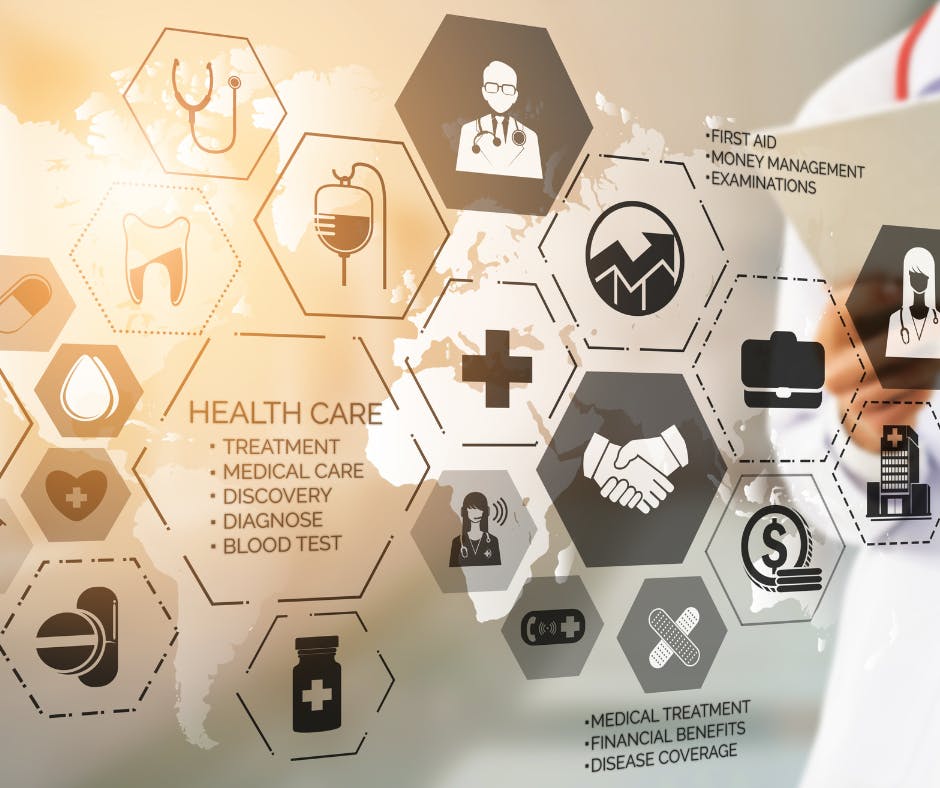The realm of healthcare is deeply intertwined with a vast array of digital files containing sensitive data. Personal health information (PHI) has become a key target for cyber-attacks due to its intrinsic value. Hence, ensuring the highest standards of file security in the healthcare sector is paramount. With advancements in digital health systems and increased reliance on technology, the necessity to protect these vital digital assets has never been more crucial.
If you want to make sure that your files are properly protected, you must employ the right tools. Take a look at some of the most important pieces of information you need to know regarding file security and the medical field, and do not hesitate to reach out to an expert who can put your organization in the best possible position to be successful.
Examples of Large Files in the Medical Industry
High-resolution medical imagery, such as MRIs, CT scans, and digital X-rays, often generate vast files. These files are pivotal for diagnosis and treatment, providing in-depth visual insights into a patient’s condition. These images often have to be shared among multiple specialists to ensure the best decision is made for the patient.
Detailed genomic sequencing data also produces large data sets, driving personalized treatment plans. This information is often relayed back to clinical professionals who will use it to make decisions on patient care.
Of course, Electronic Health Records (EHRs) are among the largest shared files in the medical field. They consolidate a patient’s entire medical history into comprehensive files. These records encapsulate everything from prescription histories to notes from previous medical consultations. Furthermore, telemedicine sessions, which have surged in popularity recently, require high-quality video recordings stored for future reference.
Why Large Files Must Be Stored and Transferred Securely in the Healthcare Industry
Securing large files in healthcare is a matter of patient safety and trust. A breach exposing PHI can lead to identity theft, financial scams, or even blackmail. Ensuring secure storage and transfer prevents unauthorized access, safeguarding patients’ well-being and the integrity of medical institutions.
Inappropriate handling or exposure of medical files can also have legal ramifications. Breaches could result in hefty fines, lawsuits, and loss of accreditation for healthcare providers. More importantly, secure storage and transfer maintain patient confidentiality, a foundational principle in medicine.
Key File Regulations in the Healthcare Industry
HIPAA, the Health Insurance Portability and Accountability Act, is a pivotal regulation concerning PHI in the U.S. This act mandates stringent measures to ensure the privacy and security of health information, with particular emphasis on digital data. Non-compliance not only leads to severe financial penalties but can also entail criminal charges, emphasizing its gravity.
Another core regulatory framework is the Health Information Technology for Economic and Clinical Health (HITECH) Act. Designed to promote the adoption of electronic health records, HITECH also stipulates strict penalties for security breaches. Both acts underscore the vital importance of using compliant file storage and transfer solutions.
The Biggest Threats To File Security in the Healthcare Industry

In an era where cyber threats evolve continuously, understanding the most significant risks to healthcare file security becomes paramount. Some of the top risks that everyone has to keep in mind include:
Poor Password Hygiene
Weak passwords or reused credentials are a frequent Achilles’ heel. Once a malicious actor deciphers a password, they can easily access sensitive files. Implementing strong password policies and regular updates can curtail this vulnerability.
Automated brute-force attacks exploit weak passwords, gaining unauthorized access to critical systems. Ensuring complex, unique passwords across systems can significantly deter these types of incursions. There is even a lay person’s guide to addressing cybersecurity that has some deep insights.
Shadow IT Devices
Shadow IT refers to devices and software not officially approved by an organization but used within its networks. These unauthorized devices can introduce vulnerabilities into an otherwise secure system. Monitoring and controlling device access is crucial to mitigate these risks.
Many times, employees use personal devices for convenience, unaware of the potential threats. Without proper security measures, these devices can become gateways for cyber-attacks. Educating staff and ensuring robust network storage connectors can provide an additional layer of security.
Ransomware Attacks
Ransomware attacks encrypt victims’ files, rendering them inaccessible until a ransom is paid. Healthcare institutions are attractive targets due to the critical nature of their data. Immediate action and secure backups are essential in countering these threats.
A successful ransomware attack can paralyze a healthcare facility. With patient lives potentially at stake, the urgency to restore systems often forces institutions into paying hefty ransoms. Preventative measures, as outlined in tips for sending confidential information, can be invaluable in these scenarios.
DDoS Attacks
Distributed Denial of Service (DDoS) attacks overwhelm systems by flooding them with traffic. While not specifically targeting files, these attacks can incapacitate healthcare IT systems. Proactive monitoring and defensive measures are vital to mitigate their impact.
DDoS attacks can serve as smokescreens, diverting attention from simultaneous cyber-attacks on other fronts. Keeping systems updated and fortified against these onslaughts is pivotal. Delving into the building blocks of IT compliance can offer further insights into fending off such threats.
Phishing and Social Engineering Attacks
Phishing scams trick individuals into providing sensitive information by masquerading as trustworthy entities. These attacks often come via email, luring victims with deceptive messages. Staff education and vigilance are the first lines of defense against these threats.
Social engineering attacks manipulate people into breaking security procedures, often using information gathered from other sources. Regular training sessions can arm employees with the knowledge to spot and thwart these attempts. Do not forget to learn more about secure file management, which has some invaluable tips.
The Top Tips for Improved File Security in the Healthcare Industry

File security in the healthcare industry is multifaceted, demanding an amalgamation of best practices and cutting-edge solutions. Recognizing and implementing these strategies ensures that both patients and providers remain protected. Some of the key tips to note include:
Ensure End to End Encryption
End-to-end encryption ensures that data remains unreadable to anyone except the intended recipient. This encryption method protects data both in transit and at rest. Any healthcare provider must prioritize this to safeguard their files, as emphasized in encrypted file sharing services.
Using platforms that provide robust encryption protocols can deter potential breaches. Even if data falls into the wrong hands, the encryption ensures it remains indecipherable. For further insights on the importance of encryption, refer to the article on keeping compliance files safe in the healthcare industry.
Use Advanced Password Management Tools
Password managers generate, retrieve, and store complex passwords. With cyber-attacks becoming more sophisticated, relying on human memory for passwords is no longer viable. Opting for advanced password tools can exponentially bolster security measures.
These tools not only provide a repository for passwords but also offer features like breach alerts. With HIPAA compliant file sharing solutions integrating these tools, healthcare providers can ensure a robust defense against unauthorized access.
Ensure HIPAA Compliant Activity Logs
Activity logs that comply with HIPAA regulations help track all interactions with sensitive data. These logs can pinpoint any unauthorized or suspicious activities, serving as early warning systems. Integrating these logs into systems ensures accountability and transparency.
Moreover, in the event of security incidents, these logs are pivotal for forensic analyses. Having a clear trail of all actions taken with sensitive files can assist in identifying and rectifying vulnerabilities. This is a critical part of managing the file lifecycle.
Update All Digital Security Measures
Cyber threats evolve rapidly, and yesterday’s security measures might be obsolete today. Regular updates to all digital security tools and protocols are non-negotiable. This includes everything from firewalls to antivirus software.
In addition, staying abreast of the latest threats and countermeasures is crucial. Regularly updating systems and software can patch vulnerabilities and bolster defense mechanisms. Sadly, there are a lot of common vulnerabilities, which is why staying on top of the latest safety measures for file-sharing in the healthcare industry.
Take Advantage of Granular User Roles and Permissions
Granular permissions allow healthcare institutions to dictate who can access specific files and to what extent. These permissions can range from viewing rights to full edit and deletion capabilities. Implementing these ensures that only authorized individuals can access and modify crucial data.
By ensuring a strict hierarchy of access, healthcare providers can minimize the risk of internal breaches. This level of detailed control ensures that sensitive files remain in safe hands. For a broader perspective on this, stay abreast on the 6 myths about secure file transfer.
Leverage the Benefits of SmartFile for Your Healthcare File Security
SmartFile stands as a beacon in the realm of healthcare file security, offering a suite of features tailored to the unique challenges of the industry. With a deep understanding of the regulatory and practical demands, SmartFile ensures that your data remains in safe hands.
Unlimited File Sizes With Secure File Transfer
No longer are healthcare providers constrained by file size limitations. SmartFile allows the seamless transfer of even the most extensive medical data sets. Coupled with unparalleled security protocols, this ensures that data reaches its destination intact and uncompromised.
Whether it’s detailed genomic data or high-definition medical imagery, SmartFile can handle it with ease. Offering both speed and security, it ensures that patient care isn’t hampered by technological constraints.
File and User Activity Notifications
Constant vigilance is the price of security, and SmartFile’s activity notifications ensure that you’re always in the loop. Be it file access, edits, or transfers, you’re instantly notified. This real-time surveillance is pivotal for quick response to any anomalies.
With these notifications, healthcare providers can maintain a pulse on all file activities. Any unauthorized or suspicious actions can be quickly identified and rectified. For more insights into this, the article on file sharing and storing solutions that improve compliance is a valuable resource.
Fully Encrypted File Sharing
SmartFile takes encryption seriously, ensuring that your files are shielded from prying eyes at all times. Leveraging cutting-edge encryption protocols, SmartFile guarantees the confidentiality and integrity of your data. Whether it’s being transferred or stored, your data remains secure.
In the digital realm of healthcare, encryption isn’t a luxury—it’s a necessity. And with SmartFile’s uncompromising stance on this, healthcare providers can rest easy. Take full advantage of encrypted file sharing services for your hospital or practice.
The Latest Digital Security Measures for Healthcare File Safety
With cyber threats constantly evolving, SmartFile ensures that its defenses do too. By integrating the latest digital security measures, it stays one step ahead of potential attackers. This proactive approach is what sets SmartFile apart in the domain of file security.
The healthcare industry can’t afford to be reactive when it comes to cybersecurity. With SmartFile’s forward-thinking solutions, providers are equipped with the tools to fend off even the most sophisticated attacks. The article on keeping compliance files safe in the healthcare industry delves deeper into this.
Two-Factor Authentication and Single Sign On (SSO)
Two-factor authentication (2FA) adds an additional layer of security, ensuring that passwords alone aren’t the sole gatekeepers. Coupled with Single Sign On (SSO), which allows users to access multiple applications with one set of credentials, SmartFile offers both convenience and security.
By integrating 2FA and SSO, SmartFile strikes a balance between user experience and robust security. These features ensure that only authorized individuals can access sensitive files, providing peace of mind for healthcare providers. These are critical parts of HIPAA compliant file sharing solutions.
Count on SmartFile for Secure File Sharing for Healthcare
In an era where data breaches make headlines, the healthcare sector can’t afford to take any chances. SmartFile recognizes the gravity of this responsibility, providing solutions that stand up to the rigorous demands of the industry. With a suite of features tailored to healthcare’s unique challenges, we ensure that patient data remains shielded from threats.
By partnering with SmartFile, healthcare institutions are not just opting for a file storage solution; they’re investing in peace of mind. To explore how SmartFile can revolutionize your file security strategy, reach out to us today.
